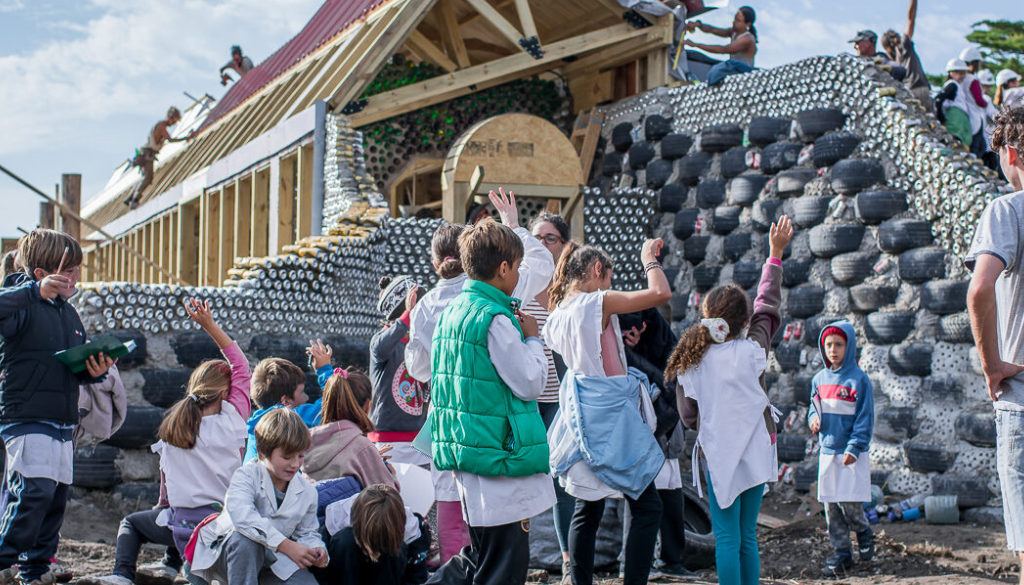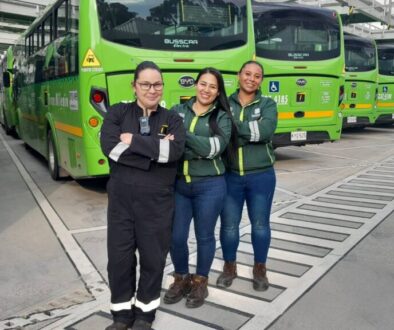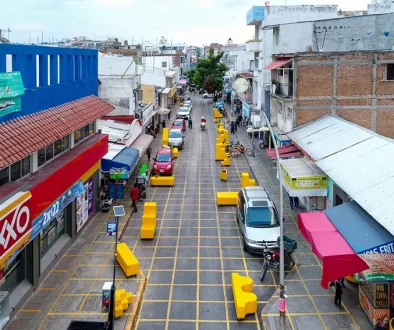Mar Chiquita: The first 100% sustainable public school in Argentina
Getting your Trinity Audio player ready... |
The Uruguayan NGO Tagma built the first 100% sustainable school in the province of Buenos Aires. Made from recycled materials, it maintains a stable temperature without the need for artifi cial heating or cooling. It is also supplied with solar energy and river water.
In 2012, a group of five Uruguayan friends became fascinated by the figure of Michael Reynolds after watching the documentary Garbage Warrior. Reynolds is a North American architect who rose to fame with the design of earthship houses, which are solar shelters made from recycled materials that remain at a habitable temperature regardless of external weather conditions. From this interest arose Tagma, an Uruguayan non-profit organization to build sustainable schools with this architectural approach.
These schools are public and self-sufficient, meaning that they use locally available resources and minimize the consumption of water, energy and fossil fuels. As the organization comments, the construction of this network seeks to “generate a triple impact: on the children who live in each school, on the surrounding community, and on society as a whole”. Following the school of architect Reynolds, this way of building and inhabiting the world in a sustainable way and in a logic of exchange with nature translates into a better quality of life.

In this sense, the program A sustainable school works with the objective of promoting a cultural change that is linked to “environmental protection, rational use of resources, mitigation of climate change and the sustainability of human relations”.
To this end, they articulate the participation of various actors: the public sector, the private sector, civil society, the academic sector and the local community.
The first experience in Uruguay
In the summer of 2016, Tagma built (together with Argentine architectural firm Nave) the first sustainable school in Latin America in the town of Jaureguiberry, Canelones, Uruguay. It took just 40 days to complete the building, which incorporated 24 tons of recycled materials and is 100% disconnected from utility grids, so it spent absolutely nothing on water, energy or heating within two years of construction.
The project won the 2017 Green Latin America award in the Urban Management category, chosen from more than 2,400 projects from across the continent. It also won the Innovation Award in the Social Impact category from Uruguay’s National Agency for Research and Innovation, and was recognized by the World Organization for Early Childhood Education for work in Education for Sustainability.
Sustainable school in Mar Chiquita
After visiting different municipalities in Buenos Aires, Tagma came across Mar Chiquita (located 30 minutes from Mar del Plata). It is one of the most biodiverse municipalities in Argentina, located near the Albufera, a lagoon connected to the Atlantic Ocean that was declared a wildlife reservoir and UNESCO World Biosphere Reserve in 1996.
School N.12. was built there, which has a population of 60 children from first to sixth grade and can be increased to 100 in its new building. Its creation was guided by the seven principles of sustainability: the use of recycled materials, gray and black water treatment, thermal conditioning, diverse and respectful human relations, the application of renewable energies, rainwater harvesting and organic food production
Find out what the school looks like here!
This note was previously published in Red/Acción on January 16, 2024.




